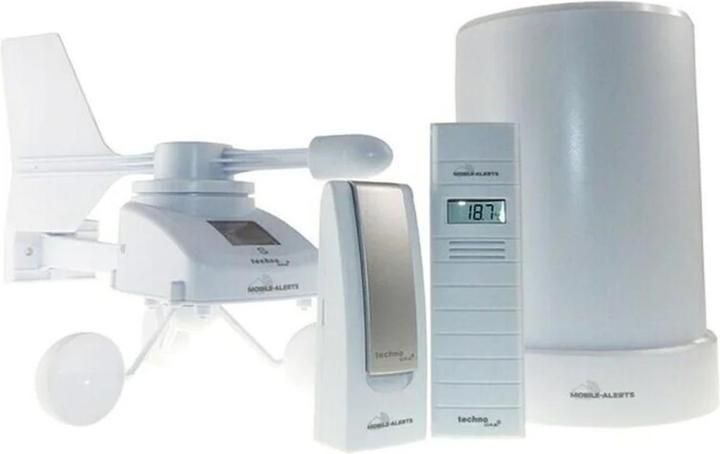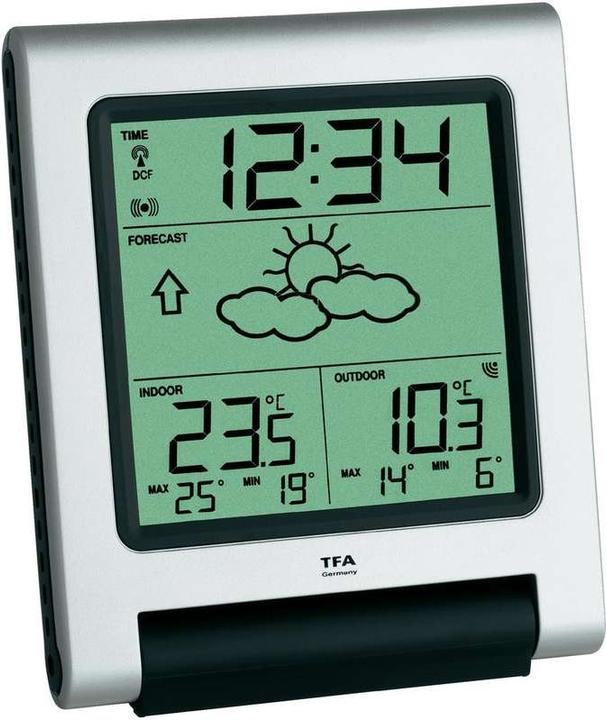

How to recognise reliable weather stations
Many weather stations look so similar that you can hardly tell the difference between reliable and useless at first glance. So that you know what to look out for in the second one, I recommend this guide.
I'm more of the "I look out of the window and go with the weather" type. But I don't always do that very well. Just because it looks nice in the sky right now doesn't mean it will still be like that in two hours' time. I've often had to learn that the hard way. In between, I try the pre-installed weather app on my mobile. So far, however, it's even less reliable than looking outside. The sun is shining while it's obviously pouring with rain. Weather stations are better. How do you find a decent one? Read on.
Let's get digital
But first, a few general facts about weather stations so that you know what we're talking about. First of all, there are analogue and digitale Wetterstationen. The former are independent of the power grid and do not require batteries or sun. The latter are easier to read. They consist of a base station in the house, a sensor outside and are more widespread in private use than the analogue version. That's why I'm focussing on digital weather stations in this guide.
Features
Every weather station must have a thermometer and barometer. Professional devices display the exact outdoor and indoor temperature. The air pressure is important in order to be able to make any predictions at all. An additional hygrometer is valuable on the one hand, as humidity has an influence on how we perceive the temperature. On the other hand, it can protect you from mould if the humidity indoors is also measured. Wind speed should also be displayed on high-quality products. All this data makes accurate measurement possible in the first place. In addition, any halfway decent station should show you the time and date.
Display
The display should be clearly laid out so that you can easily read all the data. For this reason, backlighting is also advisable. More comprehensive devices allow you to customise the information on the screen. A graphic animation of the weather forecast is easier to understand and nicer to look at than columns of numbers on the base station. So you can pick the right jacket faster.
Networking
Yes, weather stations can now also send data to your mobile. So you are always informed about the latest weather developments. The devices below do not have a base station. Whether you want this or not is up to you.
Material
The workmanship of the base station and the sensors says a lot about the quality of the device. Of course, this is difficult to recognise in the box or in pictures. You should pay attention to the workmanship when unpacking at the latest. The outdoor sensors are exposed to wind and weather and must therefore be durable.
Range
In contrast to the material, the range between the base station and sensors is relatively easy to determine, as this can usually be found in the manufacturer's specifications. A range of 30 metres can quickly become tight, as obstacles such as walls, hedges and trees impair reception and the range must be corrected downwards accordingly. A range of at least 50 metres is better, preferably even 100 metres.
Sensors
One sensor is relatively little to provide precise data, as only one specific location is covered. There is a good chance that this location will be sunny, shady or sheltered from the wind and distort the data. It is therefore better to have two, if not three sensors. Top devices even have up to ten. If only one is supplied, it should at least be possible to add more sensors to the weather station.
Handling
As a layman, you should make sure that the weather station is easy to install. Some devices consist of so many components that you can quickly lose track. As a rule of thumb: the more gimmicks, the more complicated. If you like it simple and straightforward, then cheaper (but still sensible) stations are more suitable for you.
Products
If you pay attention to these criteria, then your weather station should be good and provide you with reliable data. It's up to you to decide whether it should be expensive and have all sorts of gadgets or be inexpensive and easy to use. Below you will find recommended devices from both categories.
Reliable and affordable
Expensive and impeccable
If all else fails or a digital display is too complicated for you, there is a simple and proven method for keeping an eye on the weather:

My life in a nutshell? On a quest to broaden my horizon. I love discovering and learning new skills and I see a chance to experience something new in everything – be it travelling, reading, cooking, movies or DIY.









